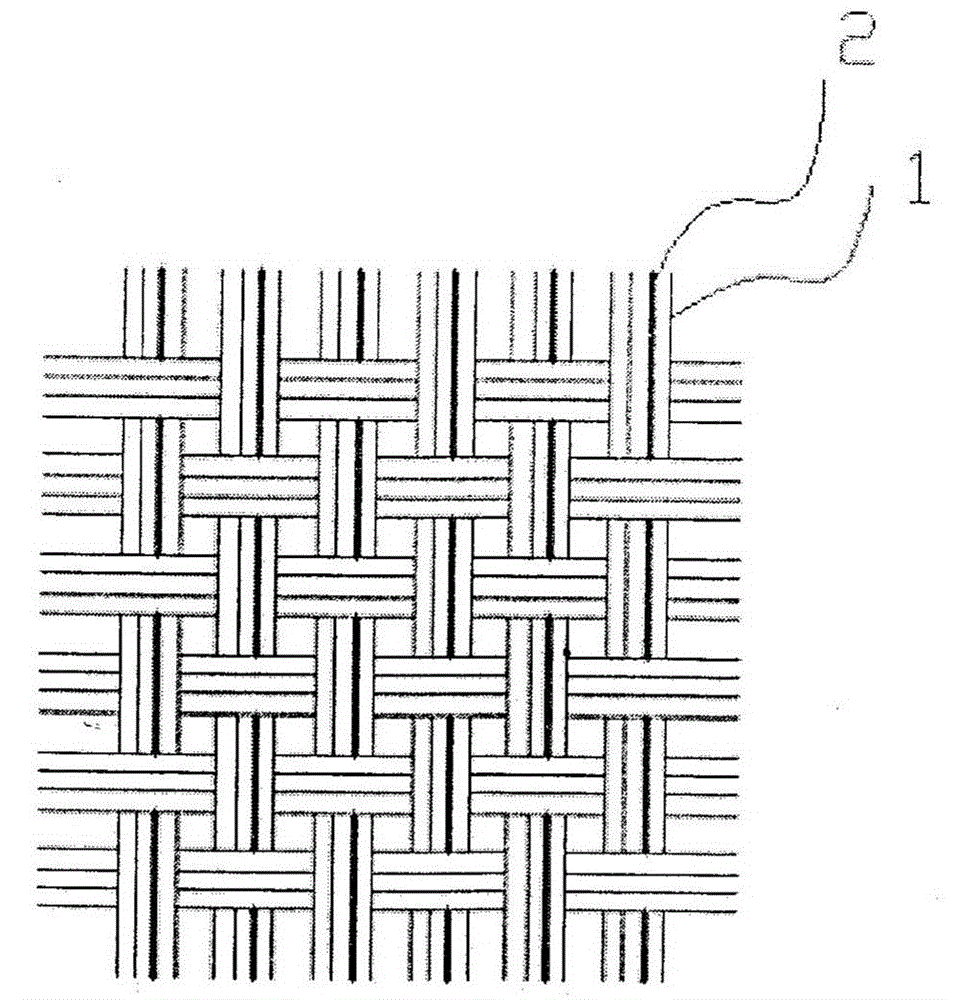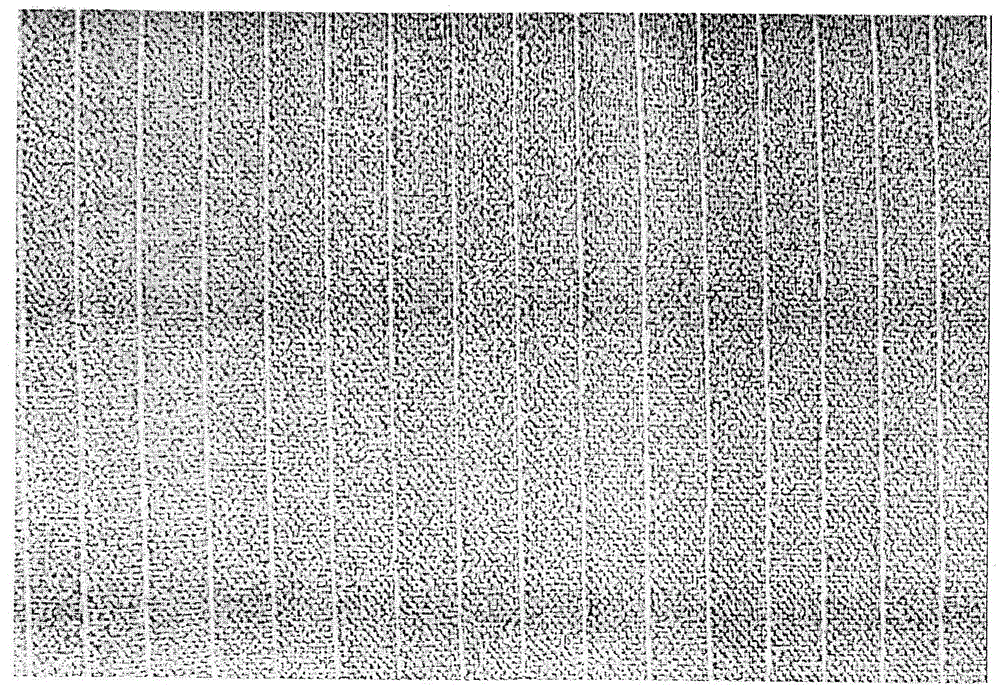Permanent flame-retardant multifunctional fabric and preparation method thereof
A multi-functional and fabric technology, applied in fabrics, textiles, textiles and papermaking, etc., can solve the secondary hazards of burns to the wearer, loss of environmental protection and safety, and lack of flame retardant effect, etc., to reduce equipment and manpower investment , good environmental protection, excellent antistatic properties
- Summary
- Abstract
- Description
- Claims
- Application Information
AI Technical Summary
Problems solved by technology
Method used
Image
Examples
Embodiment 1
[0027] figure 2 The organizational structure of the permanent flame-retardant multifunctional fabric shown is composed of figure 1 Shown in figure 2 Here, reference numeral 1 denotes warp yarns and weft yarns, and reference numeral 2 denotes antistatic filaments woven into the warp yarns.
[0028] The above reason figure 2 The preparation method of the permanent flame-retardant multifunctional fabric includes the following steps:
[0029] A) Raw material selection, select high-temperature resistant intrinsic flame-retardant fibers mixed with natural fibers as raw materials for warp and weft yarns, and select antistatic filaments used to weave the warp yarns in a spaced state, in this embodiment , The aforementioned high-temperature-resistant intrinsic flame-retardant fiber is a synthetic organic fiber, the synthetic organic fiber is aramid 1313, the mass percentage of aramid 1313 in the fabric is 40%, the aforementioned natural fiber is cotton fiber, the cotton fiber The perc...
Embodiment 2
[0033] A) Raw material selection, select high-temperature resistant intrinsic flame-retardant fibers mixed with regenerated fibers as the raw materials of warp and weft yarns, and select antistatic filaments to be woven into the warp yarns in a spaced state. In this embodiment The aforementioned high-temperature-resistant intrinsic flame-retardant fibers are synthetic organic fibers. The synthetic organic fibers are aramid 1313 and aramid 1414. Aramid 1313 accounts for 70% of the mass of the fabric. Aramid 1414 is used in the fabric. The mass percentage is 7%. The recycled fiber is a mixed fiber of viscose fiber and bamboo fiber, and the mass percentage in the fabric is 10% each. The antistatic filament is a metal substance added during the spinning process ( Metallic material such as copper sulfide) polyester filament; the polyester filament accounts for 3% of the mass percentage of the fabric;
[0034] B) For spinning, the mixed fiber of aramid 1313, spun fiber 1414, viscose fi...
Embodiment 3
[0037] A) Raw material selection, select high-temperature resistant intrinsic flame-retardant fibers mixed with natural fibers as raw materials for warp and weft yarns, and select antistatic filaments used to weave the warp yarns in a spaced state, in this embodiment The aforementioned high-temperature-resistant intrinsic flame-retardant fiber is a synthetic organic fiber. The synthetic organic fiber is aramid 1313, polyimide and polyphenylene sulfide. Among them: aramid 1313, polyimide and polyphenylene sulfide are in The mass percentages in the fabric are 40%, 5% and 10% respectively. Natural fiber is wool fiber, and the mass percentage of wool fiber in the fabric is 44%. Antistatic filament is added in the spinning process. Carbon black acrylic filament; the acrylic filament accounts for 1% by mass in the fabric;
[0038] B) For spinning, the mixed fiber obtained by step A) of aramid 1313 fiber, polyimide fiber, polyphenylene sulfide fiber, and wool fiber is mixed into a clear...
PUM
| Property | Measurement | Unit |
|---|---|---|
| Basis weight | aaaaa | aaaaa |
Abstract
Description
Claims
Application Information
 Login to View More
Login to View More - R&D
- Intellectual Property
- Life Sciences
- Materials
- Tech Scout
- Unparalleled Data Quality
- Higher Quality Content
- 60% Fewer Hallucinations
Browse by: Latest US Patents, China's latest patents, Technical Efficacy Thesaurus, Application Domain, Technology Topic, Popular Technical Reports.
© 2025 PatSnap. All rights reserved.Legal|Privacy policy|Modern Slavery Act Transparency Statement|Sitemap|About US| Contact US: help@patsnap.com


